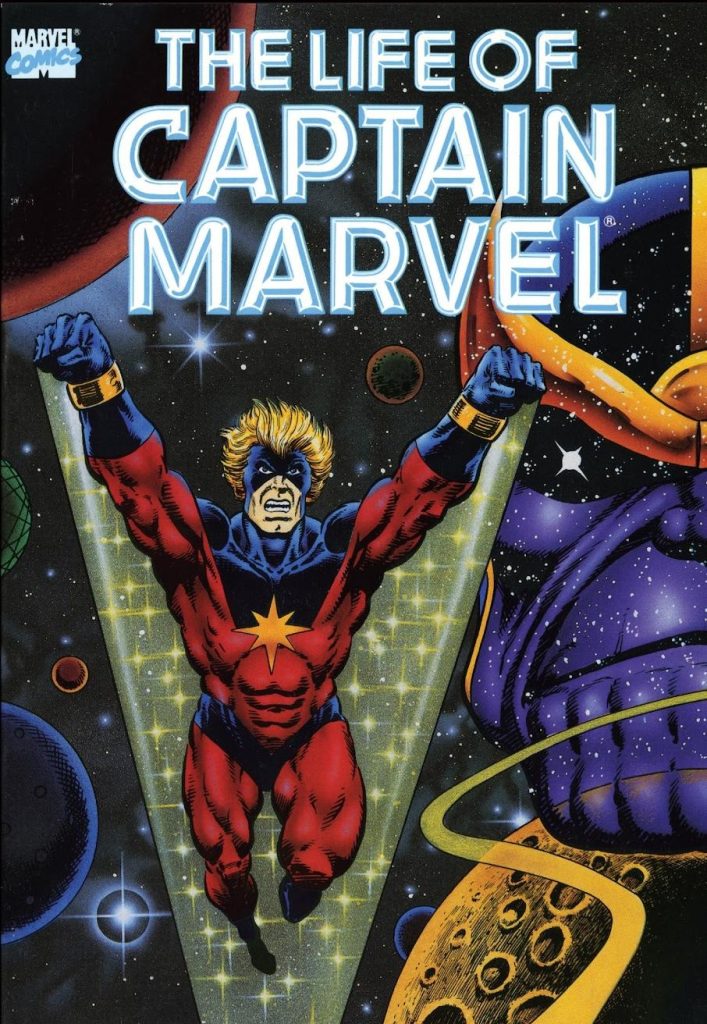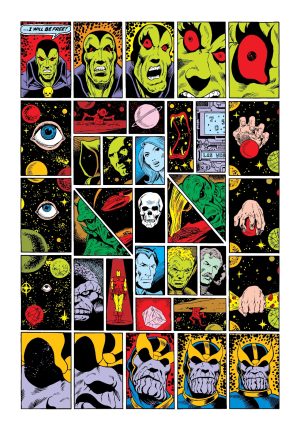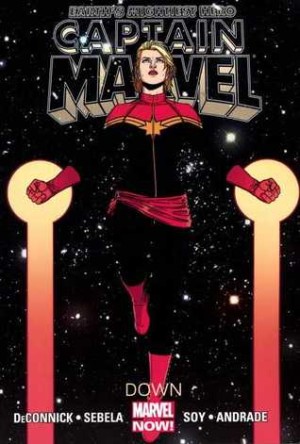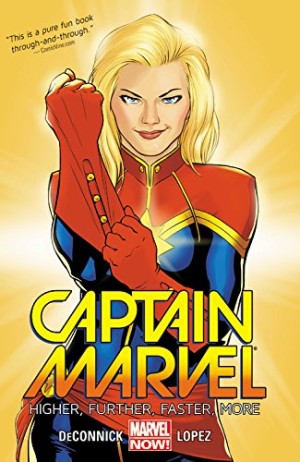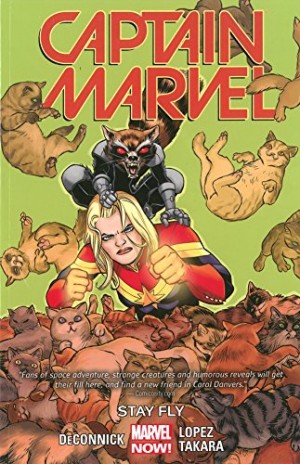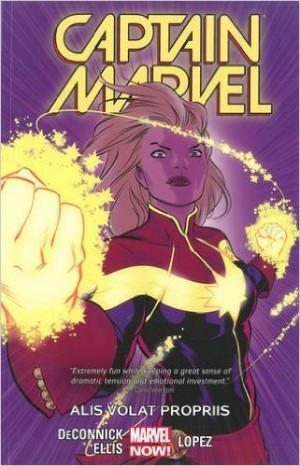Review by Frank Plowright
It should be stated from the off that Jim Starlin’s run on Captain Marvel from 1972 and 1973 is a pioneering work that’s fallen victim to its own success. Starlin took a character no-one really cared about, whose title perennially hovered on the cancellation line, and implanted him in a cosmic epic with philosophical and ethical concerns given greater coverage than usual at the time. It pointed the way forward and similar events have manifested with increasing frequency over the decades, many by Starlin himself, and many handled more commercially and efficiently than these Captain Marvel stories.
There’s a prelude introducing Drax the Destroyer, an immensely powerful being sworn to kill Thanos as the only solution to his threat, and Iron Man caught in the middle. As pictured in his debut, Thanos lacks his imposing bulk, and wears an undignified shorts and boots combination, but he’s still a presence in a story introducing his background and purpose along with the society of Titan. Jack Kirby’s New Gods is an obvious background influence, but Starlin tells his own story with his own personalities. Kirby is likewise an influence on the art, along with Gil Kane, but the combination of power and finesse rapidly moves into a synthesis unmistakeably Starlin’s own. His star-dotted space is still definitive, and Starlin’s great at designing humanoid aliens. As a signifier of innovation, look at the sample art. Nothing as trippy had ever appeared in a Marvel comic.
Despite the ambition on display, what’s often forgotten when considering Starlin’s Captain Marvel pro and con, is that these ten issues are the first ten comics Starlin produced (allowing for Mike Friedrich scripting a few of them). Because he’s learning on the job, there are problems with the pacing, artistic inconsistencies and the occasional jarring note, but the overall progress is astonishing. Set these up against the first ten published comics of any other American comic creator and Starlin would still sit near the top of the quality ranking.
This is a fall and rise arc. Captain Marvel was used to facing opponents of a similar stature, or weaker, and Thanos is the first foe that outclasses him in every respect. A first encounter is brief and Captain Marvel is almost inconsequential, and that’s before Thanos acquires the reality-altering Cosmic Cube. A battle with the Super Skrull identifies limitations, and even though the subsequent melee with the Controller is dragged on too long, it introduces tweaks to Captain Marvel’s abilities readying him for the final conflict. Many others might have discarded human alter-ego Rick Jones, but Starlin retains him, not just as a sidekick, but an important character in his own right. The Avengers guest star, as does the Thing, and the final conflict remains a stirring victory from the dregs of defeat blockbuster.
Pleasingly, the Avengers movie franchise acknowledged what Starlin initiated, so he received some wider acclaim in the end, but the path he forged has been bettered, and that diminishes the ambitions and the accomplishment.
As a genuine Marvel milestone this has seen numerous collections. Essential Captain Marvel Vol. 2 supplies it in black and white, while colour is restored for the hardcover Marvel Masterworks: Captain Marvel Volume 3. Also in hardcover are the two Captain Marvel volumes of the Ultimate Marvel Graphic Novel Collection. The Life and Death of Captain Marvel is the same as Captain Marvel: The Complete Collection by Jim Starlin. More puzzlingly, it’s also around half of Avengers versus Thanos.
